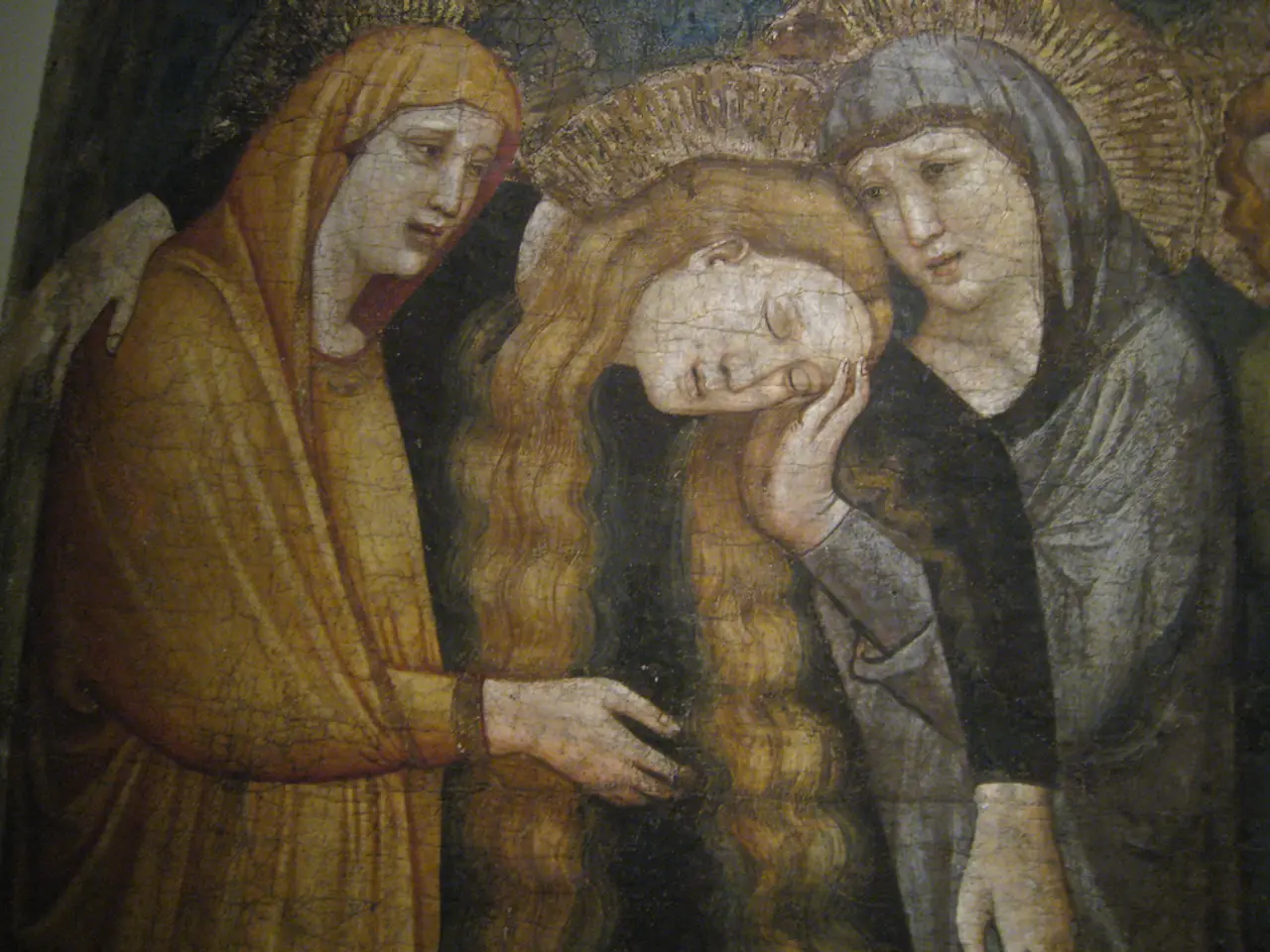Pros and Cons of AI Image-Creation Software
The graphic design landscape has undergone a significant transformation with the advent of AI-powered image generation tools. These innovative technologies have streamlined creative workflows, accelerated project completion, and expanded creative possibilities [1][3].
Streamlining Creative Workflows and Boosting Efficiency
AI tools automate repetitive tasks, offering rapid generation of design elements such as layouts, colour palettes, typography, and imagery [1][2]. This automation frees up designers to focus on creative direction, allowing them to experiment with diverse styles and produce visuals from simple text prompts in seconds.
Enhanced Creativity and Experimentation
The use of AI enables designers to explore a wide range of illustration styles, create hyper-personalised visuals, and generate novel imagery that might be difficult or time-consuming to create manually [3]. This expansion of creative possibilities has democratised design, allowing non-experts and hobbyists to create sophisticated visuals without extensive training [4].
Professional Quality Outputs
Advanced AI tools produce high-resolution, print-ready, photorealistic images with fine control over style, lighting, and composition, supporting consistent brand visuals across formats [5]. These tools often integrate with existing design software and content management systems, enabling batch processing for campaigns and improving productivity [5].
Cons and Challenges
Despite the benefits, AI-generated images may sometimes display artifacts like distorted facial features, inconsistent quality, or unnatural elements [4][5]. Generated images often struggle to depict text clearly, limiting their use in some typographic contexts [4].
Content moderation and ethical concerns also arise as AI tools restrict certain content types and raise legal debates around copyright, ownership, and authorship of AI-created artwork [3][4]. There is ongoing uncertainty about how AI will affect traditional illustrator and designer roles, raising fears about job displacement and originality loss [3].
Users may face generation speed variability, daily limits in free versions, and occasional downtime affecting project timelines [4]. In 43% of businesses, concerns about AI usage have been expressed [6].
The Future of AI in Graphic Design
AI is projected to eliminate 85 million jobs worldwide by 2025 but also create new ones [7]. The best results typically come from hybrid workflows where designers guide and refine AI outputs to maintain artistic vision, quality, and brand coherence [1][5].
In 2022, ChatGPT launched, introducing a disruptive AI-generating concept [8]. As AI continues to evolve, it is expected to play an increasingly significant role in the graphic design industry, offering both perks and downsides.
References:
[1] AI in Graphic Design: A Comprehensive Guide. (2022). Retrieved from https://www.creativebloq.com/features/ai-in-graphic-design-a-comprehensive-guide
[2] The Impact of AI on Graphic Design. (2021). Retrieved from https://www.designshack.net/articles/inspiration/impact-of-ai-on-graphic-design/
[3] The Pros and Cons of AI in Graphic Design. (2021). Retrieved from https://www.creativebloq.com/features/pros-and-cons-of-ai-in-graphic-design
[4] The Future of AI in Graphic Design. (2021). Retrieved from https://www.designshack.net/articles/inspiration/future-of-ai-in-graphic-design/
[5] How AI is Revolutionising the Graphic Design Industry. (2021). Retrieved from https://www.digitaltrends.com/art/how-ai-is-revolutionizing-the-graphic-design-industry/
[6] 43% of Businesses Have Concerns About AI Usage. (2021). Retrieved from https://www.forbes.com/sites/bernardmarr/2021/02/11/43-of-businesses-have-concerns-about-ai-usage/?sh=238463c9293c
[7] AI and the Future of Work. (2020). Retrieved from https://www.mckinsey.com/business-functions/mckinsey-analytics/our-insights/ai-and-the-future-of-work
[8] ChatGPT: The AI-Powered Writing Assistant. (2022). Retrieved from https://www.theverge.com/2022/11/30/23508809/chatgpt-ai-powered-writing-assistant-openai-launch
Technology has further revolutionized the incorporation of artificial-intelligence in graphic design, with hybrid workflows merging human creativity and AI-generated elements. This partnership allows designers to harness the speed and efficiency of AI while maintaining control over the artistic vision, style, and brand coherence.
Artificial-intelligence in graphic design not only benefits from enhanced creativity and experimentation but also offers new possibilities for non-experts and hobbyists to produce high-quality visuals without extensive training. However, it is essential to address obstacles such as artifacts, unclear text depiction, and ethical considerations related to copyright and authorship of AI-created artwork.




